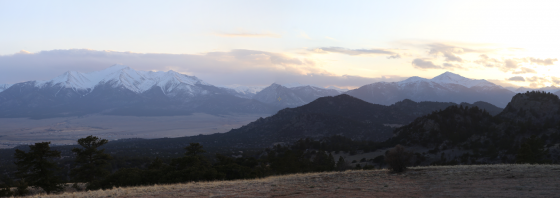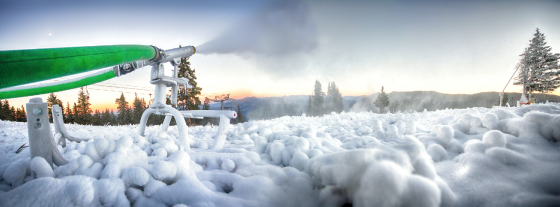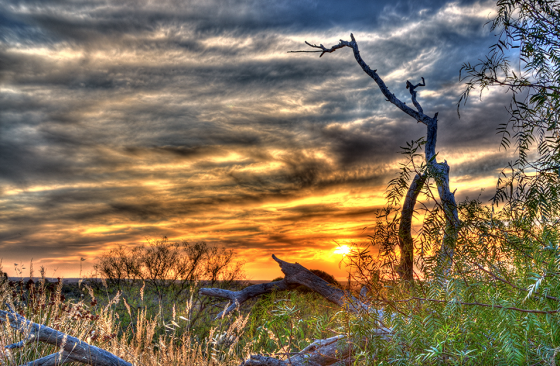Photography
Is HDR a Smart Tactic for Resort Marketing Photogs? Tripp Fay Interview


BLANCHARD
Following up on last week’s theme on content marketing, I decided to jump right into a very related, very important field: marketing photography. Why it works, how to do it better, and the future of this medium are under the lens all week long.
Since Tripp Fay became the photog at Copper Mountain, there has been an impressive improvement in the quality of photos the resort has been publishing. This is especially true for social media.
Now, “purist” photographers may scoff, but Tripp uses a simple technique called HDR to edit his photos. With the response to his photos getting better and better, I “sat down” with the man behind the lens for a quick email chat to get the story on using HDR for resort marketing photos.
—
Gregg: Okay, in a paragraph, who is Tripp Fay? Where are you now and where were you before? What are you best at?
Tripp: I grew up in a small resort town in northern Michigan called Petoskey. The 3 most popular mid west ski resorts were within 20 minutes of my home, so I developed a passion for snowboarding. My interest in photography began in high school and I knew I wanted to pursue it in college. I attended Grand Valley State University in Grand Rapids, Michigan and graduated with a Bachelor of Arts in Photography. I graduated in December of 2008 and moved to Summit County shortly after that. Just as most people who move to a mountain town do, I had a difficult time finding work in my field at first. I spent a couple of years managing a ski shop and spent all of my free time either riding or creating images. I enjoy many different types of photography, however my passion has always been capturing landscapes.
When I saw a content position open at Copper Mountain in the fall of 2011 I applied and immediately began putting my skills to use in our marketing. The reception has been overwhelmingly positive and I have since created my own position within the marketing department and have been working with our team to improve our overall marking with the help of my imagery.
Gregg: Before jumping in, let’s make sure we are all on the same page. Could you quickly define HDR and provide a couple before and afters to show what you mean?
Tripp: HDR stands for high dynamic range, simply put it is the practice of combining exposures to more accurately depict a scene. If you think about a scene with a broad dynamic range, perhaps a sunset, with a single exposure you would be forced to expose for only one part of the image leaving the bright parts of the scene overexposed and the dark parts underexposed. With the use of HDR you can take a series of exposures which accurately capture each part of the scene and the result is an image that is much closer to what you would see with your own eye. (here are a couple examples)
Gregg: Why do some people scoff at the idea of HDR?
Tripp: HDR certainly has its critics, and with a handful of photographers grossly overdoing it, I can understand why. Most educated photographers, however, probably recognize that some type of HDR method has been used since 1850. Gustave Le Gray was probably the first to attempt combining exposures with the historically famous image “Brig Upon the Water” (attached). He exposed one negative for the sky, another for the water, and combined them to create a more realistic image.
Artists have been combining exposures in the dark room ever since, even Ansel Adams used “the zone system” which is attempt to broaden the dynamic range of an image. The criticism probably came in with the advent of digital imaging and software that allowed inexperienced photographers to go overboard. There is a fine line between portraying a scene accurately and grossly over-exaggerating it. personally I am always striving to use my skills and vision to portray an accurate depiction of the natural beauty we are surrounded by in the mountains.
Gregg: Is there a rule of thumb for making sure you don’t overdo it? Any bad examples of overdone photos come to mind?
Tripp: Obviously whether an image is “overdone” is the opinion of the viewer, but I do have my own standards. I always aim to produce an image that visually accurate. If you think about how your eye works, it is continually focusing and exposing for each individual part of a scene that you look at, a camera can only do one thing at a time.
So when I produce an HDR image I am trying to replicate what your eye does naturally by exposing each part of the image correctly and combining the images to make it look like the scene as I saw it. When an HDR image is overdone your first thought upon viewing it might be “that’s not real”, usually the saturation is pushed too far and there may be banding, artifacts, or a glow around objects. Textures may be too soft or too grainy and the viewer usually has a sense that the photo is not “real”.
Gregg: Photos are popular partly as social media content (engagement stats aside) for the time it takes to go from capture to post. Do you feel this extra time taken on HDR are worth it?
Tripp: I absolutely feel that the extra time is worth it. When a FB fan is browsing their news feed they are constantly bombarded by images, my goal is to create an image that stands out from the rest. If it takes me an extra 30 minutes to create an image that will grab the attention of a fan just long enough to click on it, then I’ve done my job. After that the natural beauty of the mountains and the great conditions can pretty much sell itself!
About Gregg & SlopeFillers
I've had more first-time visitors lately, so adding a quick "about" section. I started SlopeFillers in 2010
with the simple goal of sharing great resort marketing strategies. Today I run marketing for resort ecommerce and CRM provider
Inntopia,
my home mountain is the lovely Nordic Valley,
and my favorite marketing campaign remains the Ski Utah TV show that sold me on skiing as a kid in the 90s.
Get the weekly digest.
New stories, ideas, and jobs delivered to your inbox every Friday morning.






